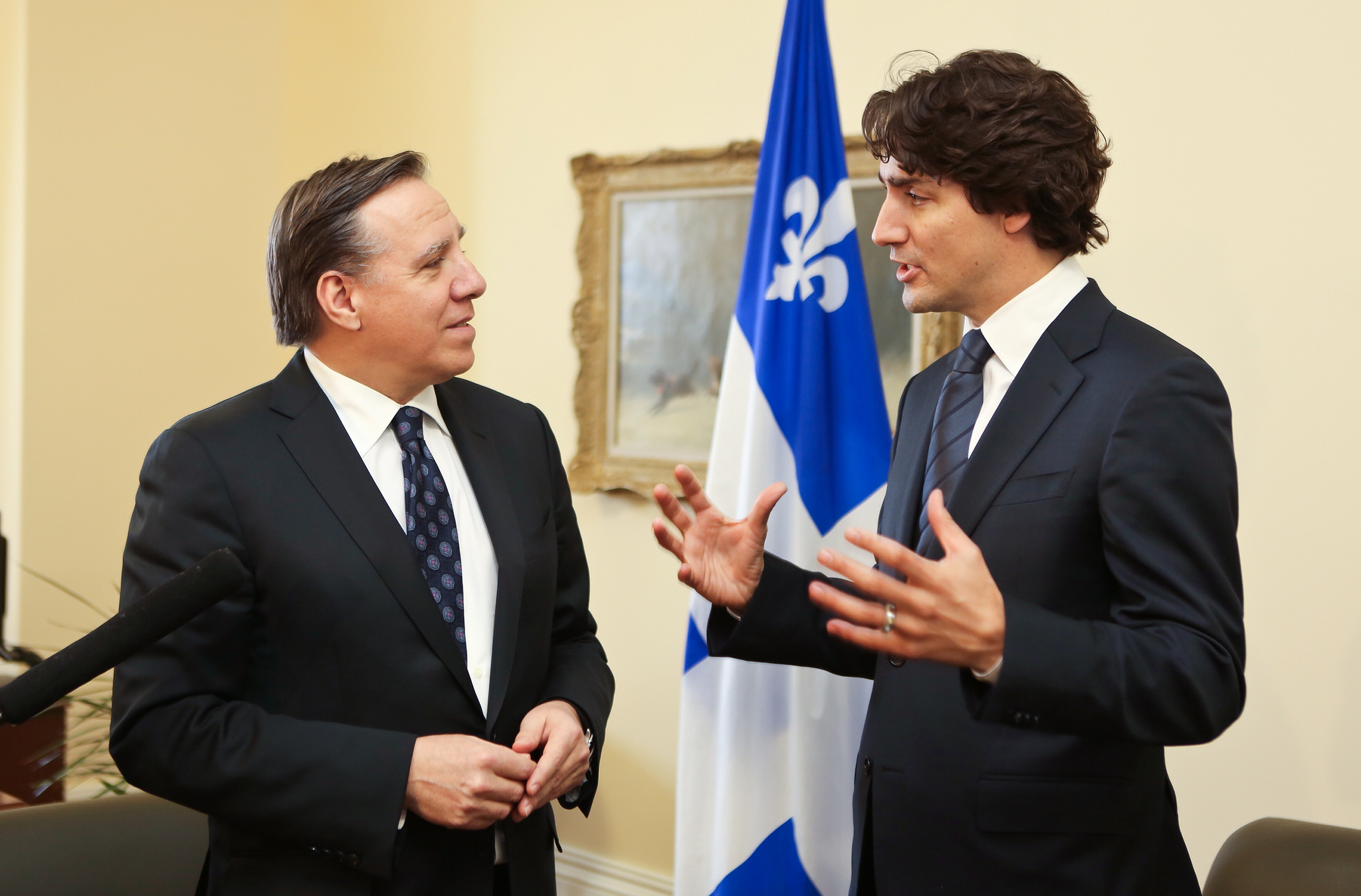
The Quebec government’s bill on religious neutrality was tabled in the National Assembly this morning. Bill 21, officially titled “An Act respecting the laicity of the State,” was presented by Immigration Minister Simon Jolin-Barrette, who had also tabled legislation that included a values test for prospective immigrants last month.
Bill 21 will ban members of the National Assembly, the judiciary, and the bureaucracy from wearing religious symbols. The ban includes employees at institutions under governmental control, such as health and social services, schools, and police. Public servants must exercise their functions with their face uncovered, with the only exception being for health reasons. The bill includes a grandfather clause exempting those who are already employed.
The bill also mandates that people must uncover their faces in order to receive public services, justified by “security” reasons. This echoes the bill tabled last year by the former provincial Liberal government, which was suspended by the Quebec courts pending a court challenge. Indeed, the same logistical nightmares that plagued the Couillard government are now affecting the CAQ. This time around, Jolin-Barrette has clarified that a woman with a veil would be allowed on the bus without uncovering her face, that there would be no strip searches to find these prohibited religious symbols, and that tattoos and dreadlocks would not be included.
On the same day, bills to remove the crucifix from the National Assembly and to “decide Quebec’s future,” without being approved by the amending formula of the Constitution, have also been proposed.
Prime Minister Justin Trudeau has condemned Bill 21, stating that it is “unthinkable” that a free society would legitimize discrimination based on religion. Indeed, this bill would prohibit Muslim women who wear veils and Sikh men who wear turbans from becoming teachers, judges, and being elected to the National Assembly, unless they stop wearing their religious coverings.
Opposition leader Andrew Scheer has said that as Prime Minister, he would not propose a similar law and that he will always protect individual rights. NDP leader Jagmeet Singh has called this law divisive and that people need to be united.
The Quebec government has pre-emptively invoked the Notwithstanding clause to combat any potential court challenges. This clause, found in Section 33 of the Charter of Rights and Freedoms, permits any provincial bill to override certain sections of Charter, including the fundamental right to the freedom of religion, for a period of five years. McGill Dean of Law Robert Leckey has said that this virtually immunizes the bill from any court challenges and demonstrates the Quebec government’s belief that the bill would not pass any constitutional reviews.
The bill states clearly that it aims to affirm Quebec’s “distinct character.” In fact, the direct references to Quebec’s history and to the “Quebec nation” makes it clear that the bill aims not only to direct workplace activity but also to further a particular vision and cultural environment within the province. Certainly, the bill’s imperative to “consider the equality of men and woman” reflect the comments made by Isabelle Charest, the Minister of the Status of Women, that the hijab is a “symbol of oppression.” Quebec’s historic attachment to laicity originates from a long period where the Catholic church had been responsible for most government services. The Quiet Revolution in the 1960s inaugurated the contemporary emphasis on the separation of church and state, which the CAQ government says will be compromised by allowing religious symbols to be worn by public employees.
While Premier Legault has said that “this bill represents our values,” the many civil liberties groups that have come out against it beg to differ.
The opinions expressed in this article are solely those of the author and they do not reflect the position of the McGill Journal of Political Studies or the Political Science Students’ Association.
Feature image by Justin Trudeau via Flickr Creative Commons